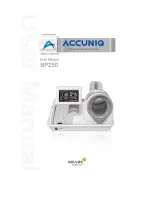
45
9. Technical data
9.1 FHSS Technology
The wireless transmissions of this baby
monitor use modern FHSS technology.
Frequency Hopping Spread Spectrum
(FHSS) is a digital frequency spreading
method for wireless data transmissions.
Unlike earlier methods, the whole of the
transmission power is not concentrated on a
single frequency. Instead, the carrier
frequency is changed at random. The
individual data packets transmitted via the
different carrier frequencies are then
reassembled in the receiver.
This method has several advantages over
conventional radio transmission:
• It is also much more difficult to intercept the
radio signal, because the listener does not
know how the signal is distributed among
the different frequencies and how to
correctly reassemble it. For this reason the
same method is used by Bluetooth and by
the military.
• Radio transmissions that use this method
are also much less susceptible to
interference. This is because a given
carrier frequency is always used only very
briefly before switching to another. If
there is interference on one frequency it
will affect only small data packets, and
appropriate correction algorithms can
compensate for such errors.
9.2 Using several babyphones
The FHSS technology in this babyphone
makes it possible to use several complete
babyphone sets (baby unit + parent unit)
side by side in order to monitor a number of
rooms simultaneously. Each parent/baby
unit combination is equipped with a unique
code that makes it impossible to receive or
transmit signals from or to a different
babyphone.
For this reason this device cannot be
extended by purchasing additional baby units
or parent units.
Wireless connection
2.4 GHz FHSS
Transmission frequency
2408 MHz - 2474 MHz, max EIRP 100mW
Number of channels
12 / automatic channel selection
Line of sight range
about 250 m
Range within enclosed
rooms
about 40 m. Successful transmission depends on the
environment. Walls or trees can seriously interfere with
reception.
Baby unit
Operating temperature
0 °C to 40 °C ambient temperature
Parent unit
Operating temperature
0 °C to 40 °C ambient temperature
Battery
Lithium polymer battery (LiPo), 3.7 V, 1200 mAh
Period of operation in normal transmission mode: at least 15
hours
Period of operation in Eco-Mode: at least 18 hours
Charging time when battery is charged for the first time: at
least 10 hours,
on subsequent occasions, charging takes about 5 hours
Mains adapters
Input
100–240 V AC; 50/60 Hz; 0.1 A
Output
5 V
; 2.75 W;
















































